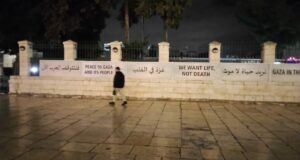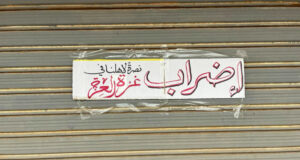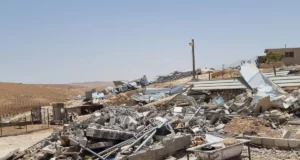By the ISM Media Team
The morning of June 30th, 2007. 12 human rights workers (HRWs), members of the ISM, CPT, EAPPI, and residents of surrounding villages went to visit a family in the village of Susiya in the Southern Hebron region. The Susiya Village, located 20 km outside of the Hebron area, is a poverty-stricken zone which Palestinian families have called home since the 1830’s. The land was once a place of many caves and homes. The homes and caves have been demolished, rebuilt, and demolished again by Israeli settlers, with the full support of the Israeli government.
Susiya Village is located between Susya settlement and the ruins of an old synagogue. The settlers therefore want to connect the settlement with the synagogue. Some of the Palestinian land owners have deeds for their lands, some do not. This makes no difference however, as the Palestinians are not allowed to use their lands as the area is officially declared a closed military zone.

The Palestinian residents have suffered from the sabotage of their land and property by settlers and soldiers. The have had their houses and wells demolished, their goats killed and their roads blocked. The case of Susiya is especially important since it may become a precedent for other villages in A3. The people living in Susiya earlier made their living from agriculture and without their lands they have no income. Uniting the nearby villages in the struggle for their lands is critically important.
Soldiers, police and settlers are working together to permanently annex Susiya’s land. Palestinian complaints are, regularly taken by the police, filed, but not followed through on. Israeli propaganda has flipped the truth and that is why it is important for Susiya to get attention from the outside.

The HRWs were taken on a tour around the lands, were shown demolished houses and caves, and for the first time in several years the presence of internationals made it possible for Palestinians to walk on the road to Yatta. This was the beginning of a continued international presence in Susiya, aiming to support them in their struggle.
 International Solidarity Movement Nonviolence. Justice. Freedom.
International Solidarity Movement Nonviolence. Justice. Freedom.


